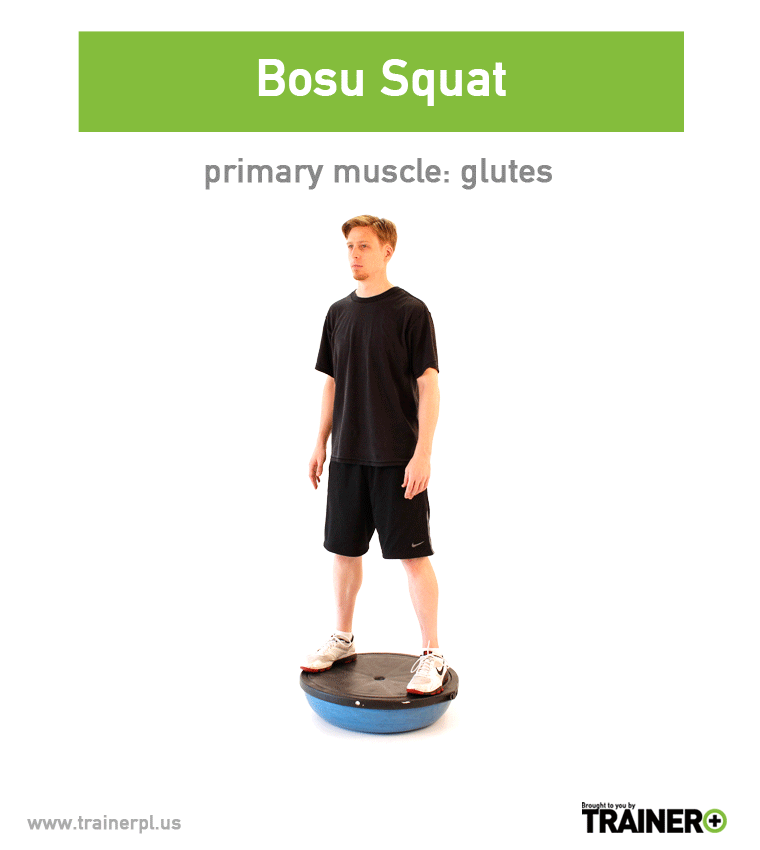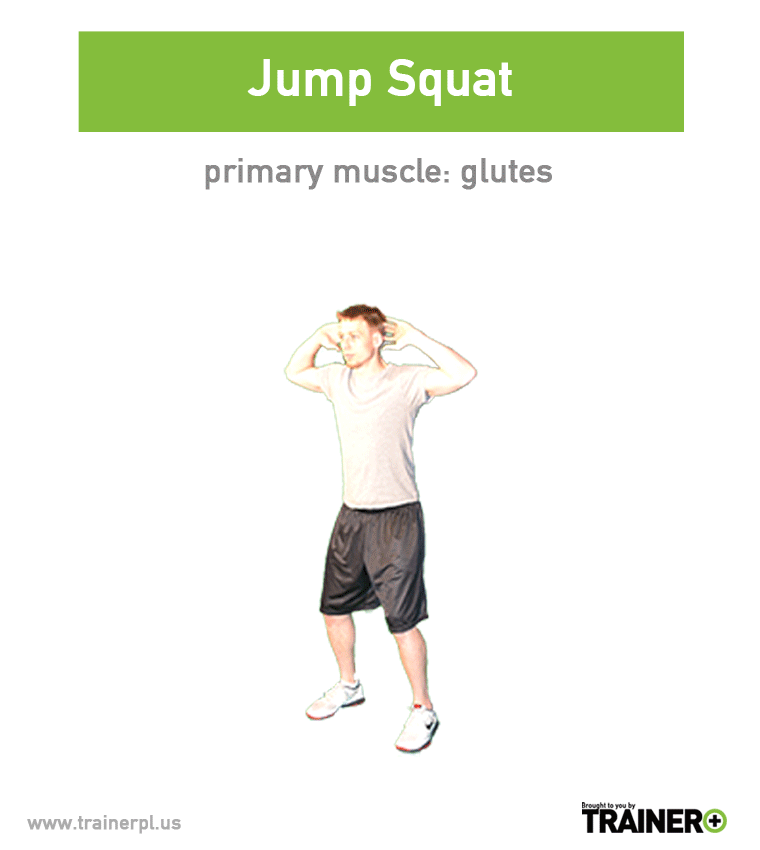SQUATS
primary muscle: glutes
The squat is one of the most important leg exercises as it engages all of the major leg muscles (glutes, quads, hamstrings and hips) in one of the most basic movement patterns, pushing the body up with both legs together. It is also the best way to put a heavy load on your legs for push movements, as you can generate more force with the hips aligned and both legs working together. Strength and stability gained from this exercise helps in movements like standing up, walking, running, lifting and climbing stairs.
Bodyweight Squat
This is the most basic version of a squat, which should be performed when learning the movement or starting a program after a long break (adaptation phase). With just bodyweight, you can focus on the form of sitting back on the heels, and knees not travelling forward past toes, while keeping the back straight. This way the focus is on increasing flexibility over time if the range of motion is not there initially (through hips and low back) before adding any weight or compression of the spine. For an even more controlled and basic progression in a machine, look to leg press.
Weight loss phase: Adaptation
Performance phase: Rehabilitation
Dumbbell Squat
This is the easiest way to add some weight to the exercise to increase difficulty, especially when focusing on building strength. By holding the dumbbells in the hands, there is also less compression on the spine as a weighted squat than the barbell version. This can also help increase the core stability needed for this movement ahead of moving to a heavier version. Proper biomechanics are easer if dumbbells are held up at the shoulders or else one dumbbell held in front of the chest hanging down (Goblet Squats).
Weight loss phase: Build, Hypertrophy
Performance phase: Hypertrophy
Barbell Squat
This variation of squat is the best way to effectively add a heavy load to the movement in order to build strength (both hypertrophy and max), while keeping the proper squat form intact and right muscles working functionally. Due to the weight resting in behind the neck, this variation does have the most spinal compression and demand on the entire core, in addition to the primary movers. It is very difficult to do this exercise in a heavy enough way to challenge your threshold without using the barbell.
Weight loss phase: Build
Performance phase: Hypertrophy, Max Strength (bulk)
Bosu Squat (flat side)
Doing a squat on the unstable but flat surface of the Bosu adds a degree of functionality and neurological engagement to this movement which helps increase hip, knee and ankle stability. This is a great way to add difficulty to this movement, or improve on the weakest part of this chain without loading a lot of weight, and can also serve to help strengthen the core engagement needed for heavier squats on the ground. For a weight loss program, this unstable squat is a good way to engage more muscles and add an element of balance to the exercise which would demand more calories in a burn phase, or help build functional strength in a building phase.
Weight loss phase: Build, Burn
Performance phase: Functional Strength, Stability
Jump Squat
This is the explosive version of this exercise where the goal is to accelerate through the movement and jump as high as possible from the squat position. This makes this variation demand on the speed of muscle contraction for the chain of muscles involved in the squat, which is also more demanding on the nervous and energy systems for each repetition. This makes it ideal for a burn phase of a weight loss program, or can be used effectively either weighted or paired with a weighted squat to help build power for a performance workout. Keeping the focusing on spending as little time on the ground as possible between jumps (minimize the eccentric phase) makes the focus more plyometric (speed of contraction).
Weight loss phase: Burn
Performance phase: Power, Plyometrics
These exercises come from our exercise library at Trainer+, a web and mobile platform for personal trainers.
Are you digitally tracking every set and rep that your clients do with or without you? There's an app for that!









